Nostalgia Marketing & Design: Pros, Cons and How to Make It Work

Research shows that nostalgia makes people feel good as they look back on the good ol’ days. In this guide to nostalgia marketing, we’ll look at what the science reveals about nostalgia and some ways that brands big and small can make it work for them.
If someone were to ask you for an example of nostalgia marketing, you might mention something like Burger King’s retro logo redesign or Budweiser’s Clydesdale commercials. The thing about this kind of nostalgia marketing is that it only works with companies who have extensive legacies where customers can remember them from back in the day. So, does that mean that nostalgia marketing is a privilege that only big-name brands can utilize?
It doesn’t.
In this post, we’re going to dig into why people love nostalgia so much. Then we’ll look at ways to make it work for your business (no matter how small or young it is) along with pros and cons to gauge whether your strategy is effective.
Why Nostalgia Is Such a Powerful Force
Nostalgia is a sentimental yearning for the past. Even if you’re not actively thinking about the good ol’ days, all it takes is for the right song to come on, the right movie scene to play or the right article of clothing to show up on the racks at your local store.
And when that happens, not only are you transported to that time and place, but your mood instantly lifts.
Why does this happen?
Well, a post in Neuroscience News explains why music in particular will trigger feelings of nostalgia.
It has to do with the close connection between music and our memories and emotions. It’s also linked with socialization, especially during our most formative years. So, when a song plays from our childhood or even our early adulthood, it generally brings back positive memories and sensations.
In fact, there’s a term for this timeframe in our lives. It’s referred to as the reminiscence bump. Essentially, we recall memories more strongly and easily from our earlier years. Specifically, between the ages of 10 to 30.
Why exactly do we remember and connect to things so strongly from that time period? Researchers suggest it’s because some of the more unique and defining experiences of our lives took place then, and ended up being more deeply embedded in our memories. Our biology and hormones may also play a role.
That said, nostalgia in marketing isn’t just effective because consumers feel sentimental about something from their youth.
This post from Current Boutique explains why others can love nostalgic marketing, too:
“A lot of people have a nostalgia for times they never lived in. We watch old movies and listen to music that were cool even before we were born, and we’re thrown back to that historical period to imagine what it was like. Putting on vintage clothing from a specific period can reignite the feelings of a specific era, time-traveling us to a different era.”
In other words, it gives consumers the ability to travel back in time to a simpler, cooler or more idealized era.
This is good to know, as nostalgia marketing might seem tricky to pull off. You do so much work to figure out who your target users are and how to appeal to them, that you worry that bits of nostalgia in your marketing might be lost on them. However, we consumers don’t have to live through a time period to have a longing or appreciation for it.
Creative Ways to Put Nostalgia Marketing to Work for You
Nostalgia marketing doesn’t need to consume your entire brand in order to work. In fact, many of the examples we’re about to see are one-off posts in a stream of otherwise very modern marketing. And perhaps that’s why they work so well. By trickling out bits of nostalgia to your audience—or posting them at an opportune time—it’ll more effectively capture their attention.
Celebrate Your Company’s Anniversary
You don’t need to have an old company or brand to use nostalgia in your marketing. That said, it doesn’t hurt if you do. For example, here’s a birthday/anniversary announcement post on the Pete’s Bar Instagram page:
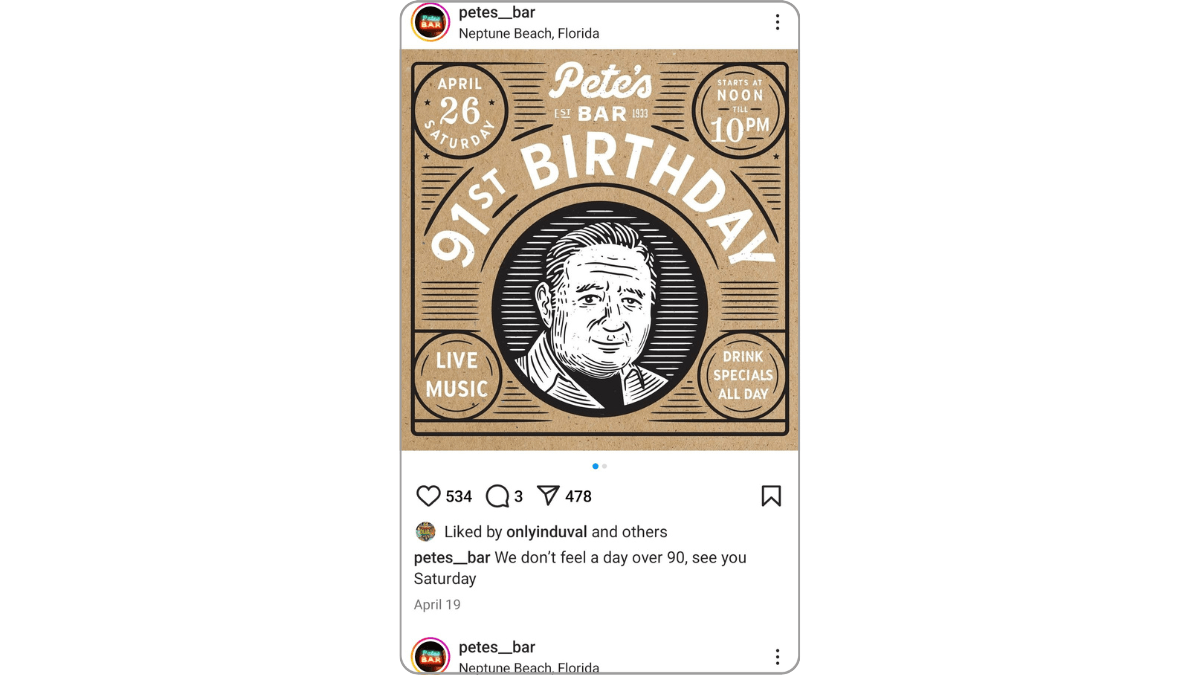
After Prohibition ended, Pete’s Bar was the very first bar to open in Duval County, Florida. Just this year it celebrated its 91st birthday with a poster design befitting its age, though it looks like they shaved a few years off of Pete himself.
There are plenty of brands and establishments around northeast Florida (where I’ve taken all of today’s examples from) that don’t have the enduring legacy that Pete’s does. Yet, they’ve all invoked nostalgia in different ways in their marketing.
Promote Retro-inspired Product Names and Imagery
Ink Factory Brewing recently announced a new beer release called Mix Tape Vol. One:
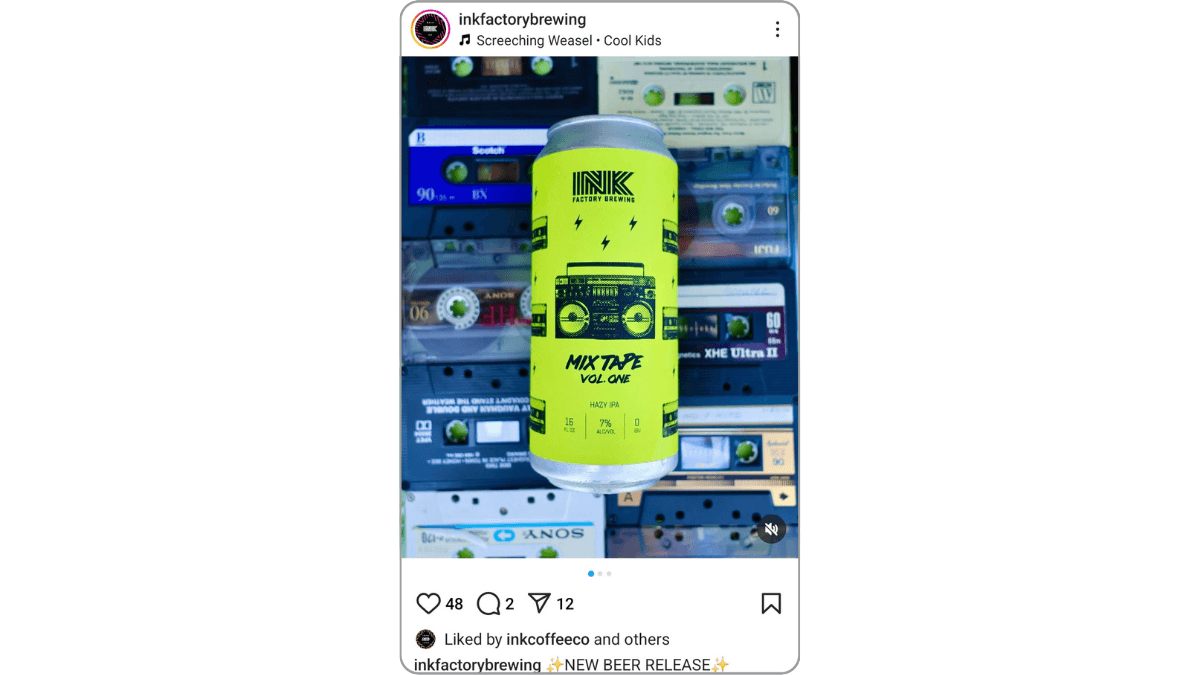
Now, younger patrons might not be familiar with what cassette tapes, mix tapes or boomboxes were. That doesn’t make the branding on this campaign any less cool. With electrifying colors, handwritten calligraphy and old school technology in the background (cassettes galore!), this post will be a hard one to scroll past without a closer look.
Make Iconic Imagery New Again
Arcades, in general, tend to have an old school vibe about them. But what’s really neat about Leaderboard Arcade is what they’ve done with their gift card design.
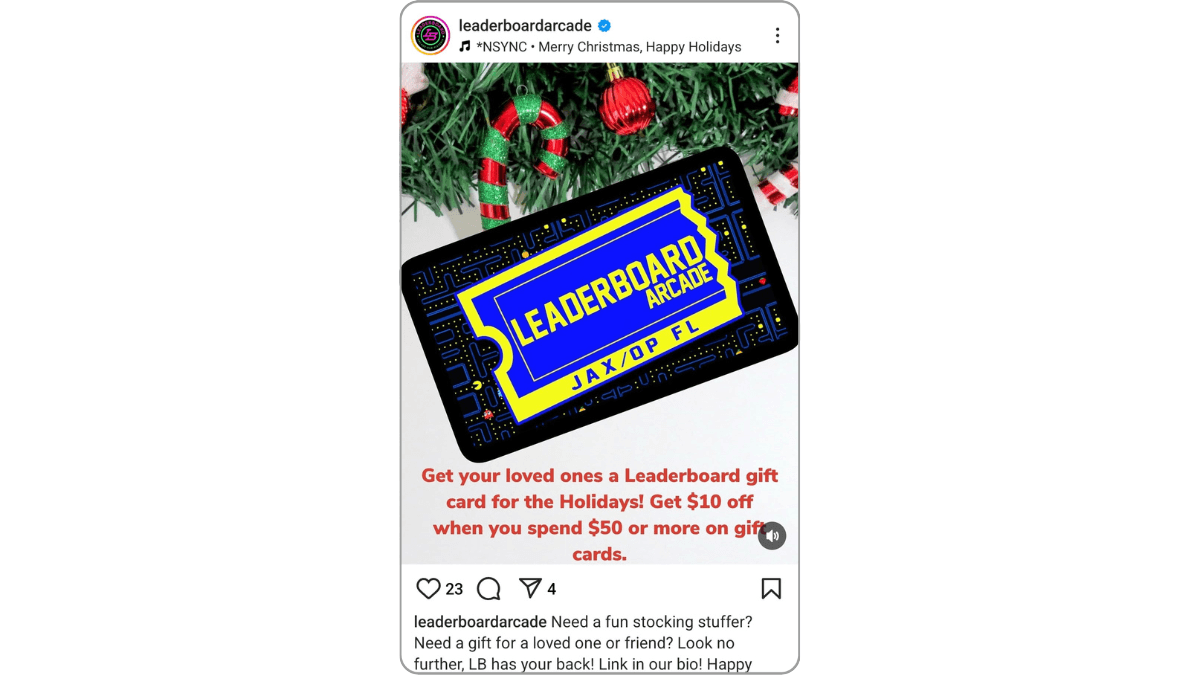
If you lived during the Blockbuster era, then you’ll recognize the movie ticket design immediately. And if you grew up playing PacMan, you’ll get excited about the background of the design, too. This is a great way to encourage more people to buy gift cards, even for the nostalgia factor.
Share Vintage Photography
Now, the Lightner Museum is an older organization. It was founded in 1948 and houses 19th century fine and decorative art. However, the majority of its posts on Instagram look modern. On occasion, they share a historical photo like the one they did for Women’s History Month in March.
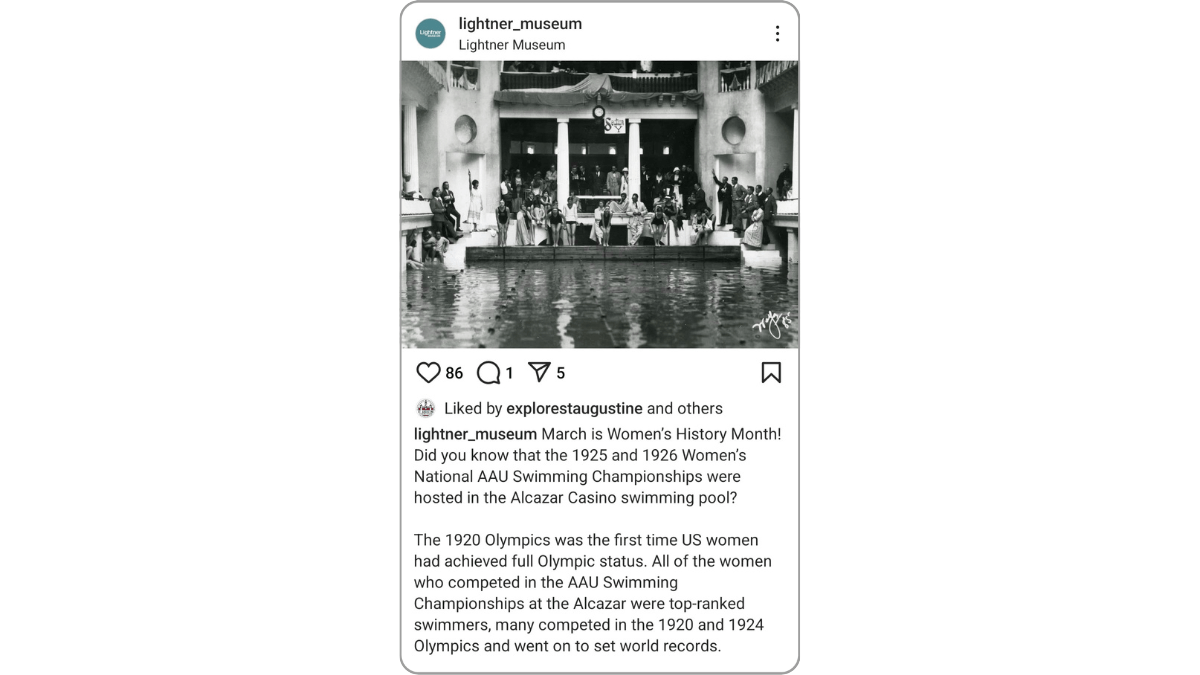
Instead of simply mentioning the holiday, the museum shared an interesting tidbit about the role of the museum (and former hotel) in the holiday. In the photo, we see women about to jump into the Alcazar Casino swimming pool as they compete in the AAU Swimming Championships back in the 1920s.
Give Your Content a Rockin’ Soundtrack
One of the awesome things about social media is that it’s given smaller and local brands the ability to create and share multimedia marketing without needing the big budget that TV ads require. Johnny Angel’s Diner does a great job of this.
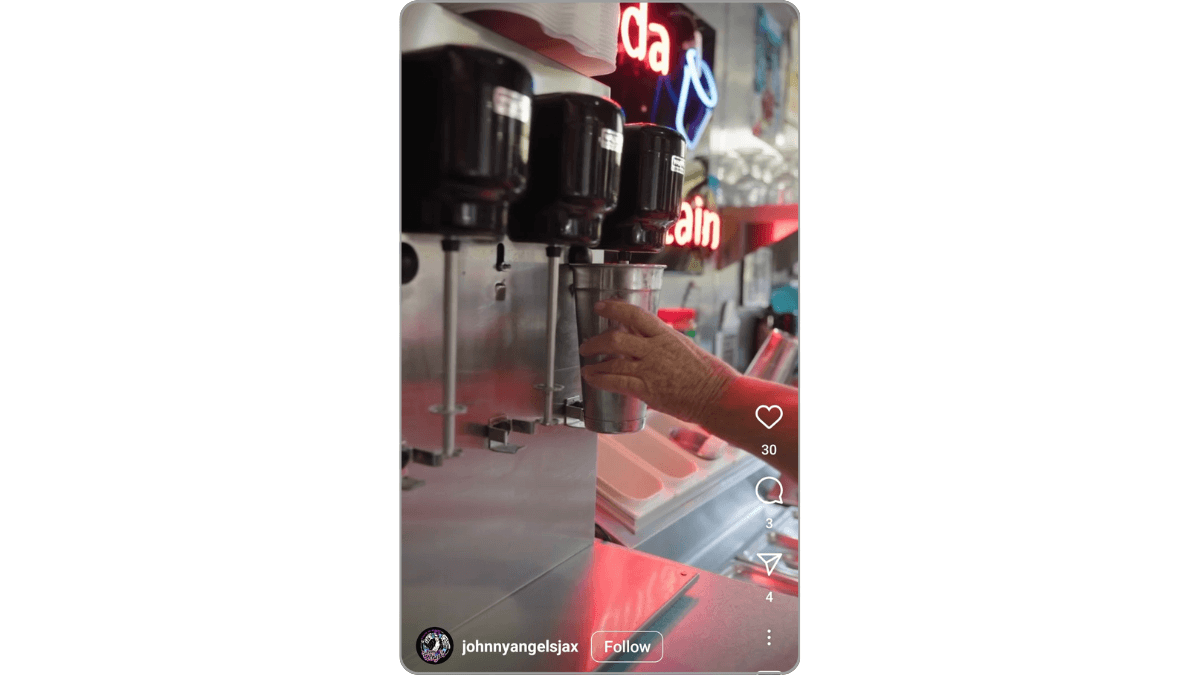
In this Instagram reel, we see an employee whipping up one of their award-winning milkshakes at the old-timey soda fountain (you can see the neon sign in the background). The reel is accompanied by the song “Twist and Shout” by the Beatles. At one point, we also see the Beatles memorabilia sign that hangs in the diner.
Pros and Cons: Should You Use Nostalgia in Your Marketing?
Now that we’ve seen some cool ways to use nostalgia marketing online, let’s talk about whether or not it’s a good idea.
The benefits of nostalgia marketing:
- It can elicit a positive response from your audience, which will make them more likely to engage.
- It provides your audience with a sense of comfort, which can improve how they perceive your brand.
- It can help improve your brand visibility and memorability with new users or prospects.
- It can help you build (or retain) a devoted community around your brand that “shares” these memories with you.
- It’s a way to aesthetically differentiate yourself from the competition.
- It can help your brand feel more human in the age of AI-generated content.
The drawbacks of nostalgia marketing:
- Too much nostalgia marketing may make it lose its novelty or sentimentality.
- Not everyone remembers certain time periods or looks fondly on them, which could make some feel alienated.
- If the retro reference seems out of character for your brand, users may pull away.
- It may make your brand feel outdated if it’s overdone or there isn’t a good balance between retro and modern.
- Unlike modern marketing, you may need to put extra time and effort into crafting nostalgic content, which could decrease your ROI.
Wrapping Up
There are so many different ways to use nostalgia marketing, though it seems that the key to success is “less is more.” This will allow your nostalgic marketing content to have the greatest impact on the people who encounter it.
So, rather than craft an entire brand identity or a full-on marketing campaign around nostalgia, find creative ways to add a piece or two to your schedule. It doesn’t have to be on Instagram or other social media platforms, per se. However, the benefit of creating nostalgic content for social platforms is that you can do a lot with a single square or rectangle of content visually. Plus, you have video and audio to experiment with, too.
Everyone can use a moment of joy and peace in their lives. And if your brand can be the one to elicit that kind of positive response, they’re likely to look just as fondly on you for that.

Suzanne Scacca
A former project manager and web design agency manager, Suzanne Scacca now writes about the changing landscape of design, development and software.
